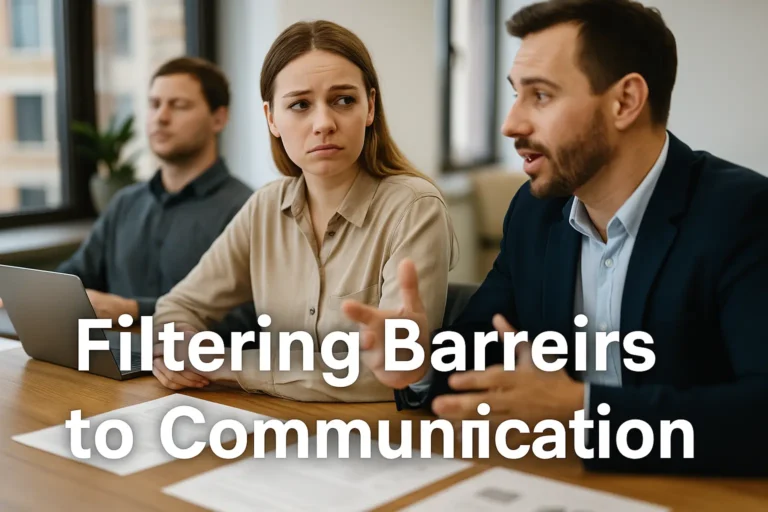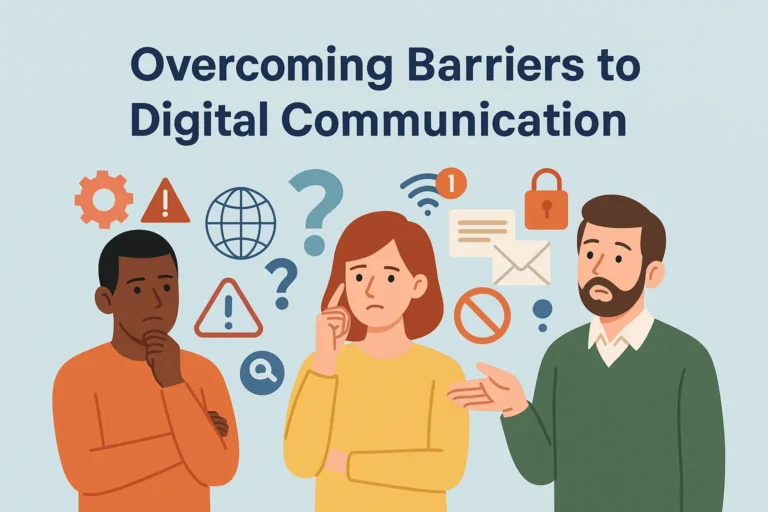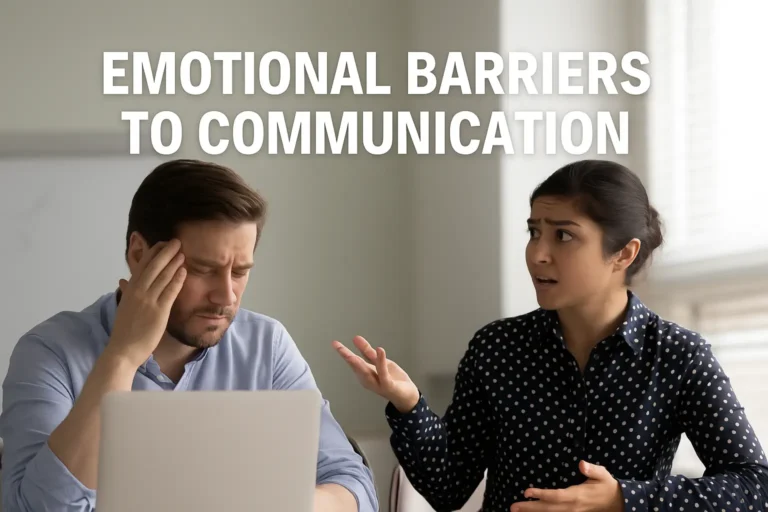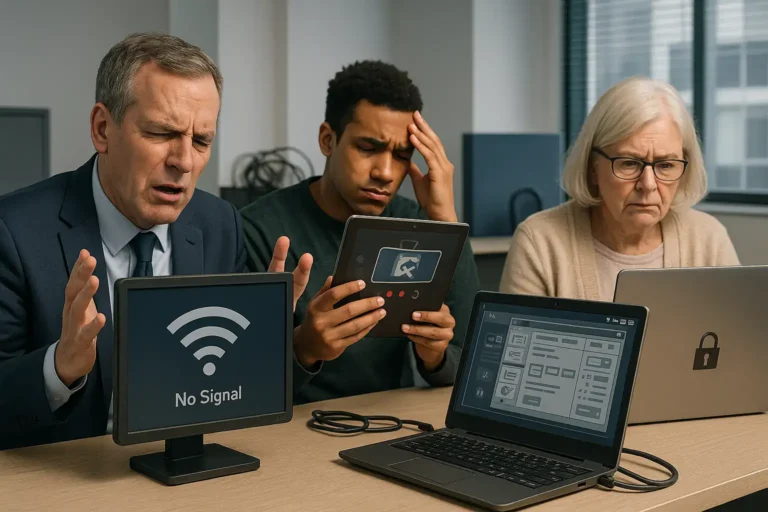Cognitive Barriers to Communication
Have you ever explained something carefully, only to realize the other person didn’t get it at all? You’re not alone. Even when people speak the same language, the way we process, store, and recall information can create invisible walls between us. These walls are called cognitive barriers to communication. They affect personal relationships, teamwork, and business interactions every single day. So what causes these barriers, how do they show up, and most importantly, how can we overcome them? Let’s look closer at the thinking traps that stand between your words and someone else’s understanding—and how to break through.
What Are Cognitive Barriers to Communication?
Cognitive barriers are the mental blocks or biases that affect how we receive, process, and interpret information. Unlike physical or technical barriers, these obstacles come from within—shaped by memory, perception, attention, and even our own emotions or stress levels.
These barriers can stem from:
- The way we pay attention (or get distracted)
- The mental frameworks (schemas) we use to organize information
- Biases that influence what we focus on or ignore
- The sheer amount of information we try to process at once
- Our ability to recall past events or conversations
Many of these cognitive hurdles happen automatically, outside our awareness. But once you understand them, you can start to manage them.
How Perception and Schema Theory Influence Communication
Every person filters information through their own mental framework, called a schema. These frameworks help us make sense of the world but can also distort reality. Two people can listen to the same story and walk away with completely different interpretations—just because their minds organize information differently.

For example, imagine a manager giving feedback. One team member might see it as helpful coaching, while another hears only criticism. This is schema theory at work: past experiences, cultural background, and expectations all influence how a message lands.
These frameworks also tie into selective perception. Our brains tend to pay attention to information that matches what we already believe, filtering out details that seem less relevant. Over time, this can lead to misunderstandings and missed opportunities for real connection.
The Impact of Confirmation Bias and Cognitive Dissonance
Confirmation bias is the mental shortcut that leads us to notice and remember facts that support our existing beliefs, while ignoring information that contradicts them. It’s like looking through a filter that blocks out anything uncomfortable or new.
This barrier is especially strong during heated discussions or debates. If you’ve ever felt someone wasn’t listening—just waiting for their turn to speak—it could be confirmation bias at work. This makes it very hard to change opinions or reach agreement.
Closely related is cognitive dissonance, the tension we feel when new information clashes with our existing beliefs or values. Sometimes, people reject or distort the message just to reduce that uncomfortable feeling. These mental processes can hinder honest dialogue, learning, and growth.
Memory and Working Memory
You might think you remember everything important from a conversation—but the brain is far from perfect. Our working memory can only hold a handful of details at a time (psychologists say about 7 “chunks” of information). When someone talks for too long, or when we’re distracted, important points slip away.
Stress, fatigue, and information overload all reduce our ability to remember or accurately recall information. If you forget a key part of a project update, it’s not always because you weren’t paying attention—your working memory may have been maxed out.
In professional settings, forgetting important details can lead to repeated work, missed deadlines, or even conflict. This is why note-taking, visual aids, and repetition are so valuable for both speakers and listeners.
Attention, Focus, and Information Overload
It’s hard to communicate clearly if you’re not really paying attention. In our digital age, distractions are everywhere: notifications, emails, social media, and even the pressure to multitask. This split focus makes it easy to miss vital details, misinterpret messages, or forget what was said.
Information overload happens when the amount of incoming information exceeds our brain’s ability to process it. This isn’t just about feeling busy—it’s a major barrier to effective communication.
To minimize cognitive overload, it helps to:
- Limit distractions (turn off notifications)
- Break information into manageable chunks
- Use visual aids to reinforce key points
Cognitive Barriers in Digital Communication
Modern communication tools—email, instant messaging, video calls—make it easy to connect, but they can also amplify cognitive barriers.
Examples:
- Text-based communication lacks tone and body language, making it easier to misinterpret messages.
- Video meetings can lead to “Zoom fatigue,” reducing attention span and recall.
- Constant notifications contribute to distraction and memory problems.
Remote teams, especially those working across time zones and cultures, need to be extra careful. Simple miscommunications can snowball into bigger problems when facial expressions and body language are missing.
Age, Neurodiversity, and Individual Differences
Cognitive barriers don’t affect everyone equally. As people age, working memory and processing speed may slow down. Older adults might need more time to absorb information or may prefer slower-paced conversations.
People with ADHD, dyslexia, or other neurodiverse conditions often face unique cognitive challenges in communication, such as trouble focusing, organizing information, or recalling words. Understanding these differences helps create more inclusive communication environments—both at home and at work.
Real-World Examples of Cognitive Barriers to Communication
Let’s look at some common examples that crop up in daily life:
- Filtering: Employees only pass along information they think the boss wants to hear, omitting crucial details.
- Selective Perception: Team members only notice comments that support their own agenda, ignoring other perspectives.
- Information Overload: An employee receives too many emails in a day, forgets the main task, and misses a deadline.
- Emotional Disconnect: During a tense meeting, feedback is taken as a personal attack rather than constructive criticism.
- Language and Jargon: A tech lead uses acronyms and slang that confuse new hires, leading to mistakes.
These scenarios are not rare—they happen every day in businesses, families, schools, and friendships.
Strategies to Overcome Cognitive Barriers to Communication
Overcoming these mental blocks takes awareness and effort, but it is possible. Here are some practical steps that make a difference:

Practice Active Listening
Active listening is more than just hearing—it’s focusing, asking clarifying questions, and repeating back what you’ve understood. This minimizes the chance of misinterpretation.
- Make eye contact (if in person or video call)
- Ask follow-up questions
- Summarize what you’ve heard (“So you’re saying…”)
Use Simple, Clear Language
Skip jargon, acronyms, or complex explanations—unless everyone in the conversation shares the same background. The goal is not to impress, but to make your message understood.
Break Down Information
Chunk complex ideas into smaller, digestible pieces. Visuals like diagrams, charts, or step-by-step guides help reinforce the message.
Invite Feedback
Encourage others to ask questions or correct misunderstandings right away. This feedback loop catches errors early.
Be Mindful of Bias
Be aware of confirmation bias and cognitive dissonance. Try to stay open-minded and acknowledge when new information challenges your beliefs.
Manage Information Overload
Limit the number of messages or tasks at once. Set aside time for focused work, and use tools to filter or prioritize messages.
Support Memory and Focus
Take notes, repeat important details, and check in with others to make sure everyone is on the same page.
Tailor Communication for Age and Neurodiversity
Adjust your style as needed—slow down, provide written summaries, or use visual aids for those who benefit from extra support.
Using Tools and Technology to Reduce Cognitive Barriers
Leverage communication tools wisely. Many apps and platforms now offer features to help manage information and improve clarity:
- Project management tools (like Trello or Asana) help organize conversations and tasks.
- Closed captions and transcription services support understanding during video calls.
- Mind mapping and note-taking apps support memory and reduce overload.
Choose technology that fits your needs, not just what’s popular or new.
Conclusion
Cognitive barriers to communication affect everyone. They’re not a sign of failure—just a natural part of how our brains work. But with the right strategies, we can limit their impact. By understanding schemas, biases, working memory, and the effects of digital overload, we make every message clearer.
Use active listening, simple language, and feedback to improve understanding. Tailor your approach to the individual, whether you’re working with a colleague, teaching a class, or supporting a family member. As our world becomes more connected—and more complex—overcoming cognitive barriers is essential for effective communication.




